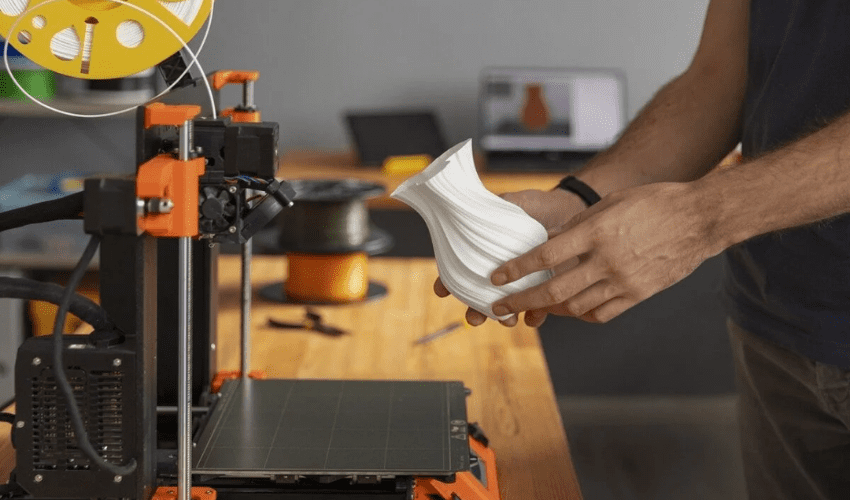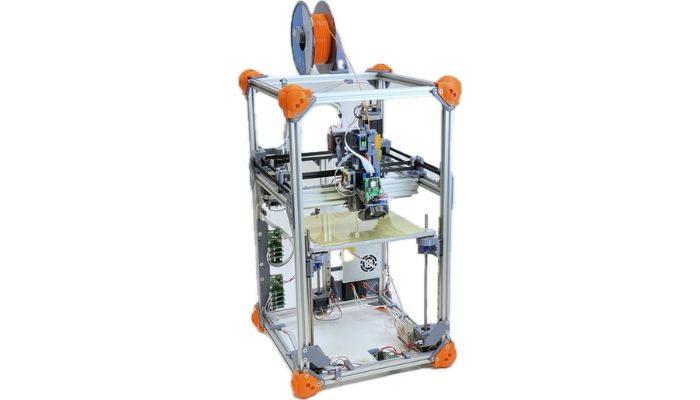MIT Researchers Unveil 3D Printer That Can Identify Unknown Materials

In response to the relentless quest for environmentally-friendly production processes, several research initiatives have sought to improve existing 3D printing materials or develop new ones, but printing these can still be a challenge. To resolve this obstacle, researchers from MIT’s Center for Bits and Atoms (CBA), the US National Institute of Standards and Technology (NIST) and Greece’s National Center for Scientific Research (Demokritos) have collaborated to develop a special 3D printer that is capable of autonomously defining printing parameters for unknown materials. This breakthrough is crucial, as it facilitates the use of renewable and recyclable materials, whose properties are diverse and difficult to characterize. By enabling a more efficient and adaptive use of materials, this 3D printer paves the way for more sustainable additive manufacturing.
Although 3D printing is becoming increasingly popular as a more environmentally-friendly process, manufacturers often find it difficult to recycle the plastics used. The introduction of new, sustainable materials is also a challenge, as print parameters have to be adjusted individually for each material – a complex process that is often carried out manually. Indeed, when printing with a new material, up to 100 parameters have to be set manually in the 3D printer software to ensure correct extrusion of the material.

Photo Credits: MIT
And although established parameters already exist for standardized materials, these have been determined after long series of tests. Furthermore, the main challenge with renewable and recyclable materials lies in their variability, making it virtually impossible to standardize parameters. As a result, users are forced to configure parameters for each material individually. This of course makes it difficult to make material choices that are more eco-friendly.
Developing a 3D Printer for Sustainable Materials
To solve this problem, researchers have developed a 3D printer with the unique ability to automatically determine the parameters required for printing unknown materials. To do this, they have adapted the printer’s extruder so that it can measure forces and material flow throughout the printing process. The data collected during a 20-minute test run is then analyzed using mathematical models, enabling printing parameters to be generated automatically.
These parameters can then be transferred to the 3D printing software, facilitating the use of the unknown material during printing. In fact, this method replaces around half the parameters that would normally have to be configured manually. In printing tests involving various materials, including renewable ones, the researchers have always obtained positive results, demonstrating the effectiveness of this innovative approach.
This breakthrough could help reduce the environmental impact of additive manufacturing, which generally relies on non-recyclable polymers and resins made from fossil fuels. Neil Gershenfeld, Director of the CBA, emphasizes the importance of this work for the future of 3D printing, noting “In this paper, we demonstrate a method that can take all these interesting materials that are bio-based and made from various sustainable sources and show that the printer can figure out by itself how to print those materials. The goal is to make 3D printing more sustainable.”
Integrating this automated parameter generation into 3D printing software could further simplify printing with new materials. Future developments aim to integrate thermodynamic models to further improve parameter accuracy and adaptability. You can find more information in the MIT report HERE.
What do you think of this 3D printer that can automatically detect the parameters for unknown materials? Let us know in a comment below or on our LinkedIn, Facebook, and Twitter pages! Don’t forget to sign up for our free weekly newsletter here for the latest 3D printing news straight to your inbox! You can also find all our videos on our YouTube channel.
*Cover Photo Credits: Pixabay






